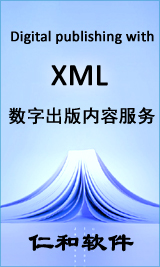Energy & Environmental Science
We report the template-directed synthesis of sulphur-carbon nanotubes and their use to form a membrane that is binder-free, highly conductive and flexible. This nanostructured membrane is used as a self-supporting cathode without metal current-collectors for Li-S batteries. The membrane cathode has a high electrical conductivity and renders a long life of sulphur of over 100 charge-discharge cycles. High discharge capacity of sulphur was attained at 712 mA h g(sulphur)(-1) (23 wt% S) and 520 mA h g(sulphur)(-1) (50 wt% S) at a high current density (6 A g(sulphur)(-1)). The overall capacity of the flexible cathode correspondingly reaches 163 mA h g(-1) (23 wt% S) and 260 mA h g(-1) (50 wt% S). These results demonstrate the great potential of this nanostructured flexible membrane as a cathode for Li-S batteries with fast charge-discharge performance and long life.
关键词:
rechargeable lithium batteries;positive electrode materials;cell;temperature;composites;capacity;oxide
Physical Chemistry Chemical Physics
A microporous-mesoporous carbon with graphitic structure was developed as a matrix for the sulfur cathode of a Li-S cell using a mixed carbonate electrolyte. Sulfur was selectively introduced into the carbon micropores by a melt adsorption-solvent extraction strategy. The micropores act as solvent-restricted reactors for sulfur lithiation that promise long cycle stability. The mesopores remain unfilled and provide an ion migration pathway, while the graphitic structure contributes significantly to low-resistance electron transfer. The selective distribution of sulfur in micropores was characterized by X-ray photoelectron spectroscopy (XPS), nitrogen cryosorption analysis, transmission electron microscopy (TEM), X-ray powder diffraction and Raman spectroscopy. The high-rate stable lithiation-delithiation of the carbon-sulfur cathode was evaluated using galvanostatic charge-discharge tests, cyclic voltammetry and electrochemical impedance spectroscopy. The cathode is able to operate reversibly over 800 cycles with a 1.8 C discharge-recharge rate. This integration of a micropore reactor, a mesopore ion reservoir, and a graphitic electron conductor represents a generalized strategy to be adopted in research on advanced sulfur cathodes.
关键词:
rechargeable lithium batteries;electrochemical properties;secondary;batteries;cell electrolyte;high-capacity;high-power;performance;discharge;composites;energy
李志宏
,
柳卫平
,
白希祥
,
郭冰
,
连钢
,
颜胜权
,
王宝祥
,
陆昀
,
曾晟
,
苏俊
原子核物理评论
doi:10.3969/j.issn.1007-4627.2005.01.006
利用8Li次级束测量了质心系能量7.8 MeV 2H(8Li, 9Li)1H反应的角分布, 导出了8Li(d, p)9Li反应的天体物理S因子及9Li→8Li+n虚衰变的渐近归一化系数.
关键词:
8Li(d,p)9Li反应
,
角分布
,
天体物理S因子
,
渐近归一化系数
张玉荣
,
陈宇
功能材料
以LiTi2(PO4)3为母体,以天然高岭石为起始原料,经高温固相反应制得了一系列新的锂快离子导体Li1.2+x-yAl0.1+xTi1.9-xSi0.1SyP2.9-yO12(以下简称Al-S-Lisicon).X射线粉末衍射分析结果表明在x≤0.30,y<0.2+x的组成范围内均能得到类似于Nasicon三方结构的相.应用交流阻抗技术测定电导率的结果表明起始组成为x=0.20,y=0.20的合成物电导率最高,室温下为6.01×10-5S/cm,573K时达1.11×10-2S/cm,其在373~573K间的活化能为28.6kJ/mol,分解电压为3.1V.
关键词:
矿物锂快离子导体
,
Al-S-Lisicon
,
高岭石
陈宇
,
张玉荣
中国稀土学报
以LiTi2(PO4)3为母体,以天然高岭石为起始原料,经高温固相反应制得了一系列新的锂快离子导体Li1.2+x-yYxTi1.9-xAl0.1Si0.1SyP2.9-yO12(以下简称Y-S-Lisicon).X射线粉末衍射分析结果表明在x≤0.3,y<(0.2+x)的组成范围内均能得到类似于Nasicon三方结构的相,同时还存在其他杂相.应用交流阻抗技术测定电导率的结果表明起始组成为x=0.1,y=0.15的合成物电导率最高,其在室温下的电导率为2.93×10-5 S·cm-1,在673 K时可达3.62×10-2 S·cm-1,其在473~673 K间的活化能为37.19 kJ·mol-1,分解电压为3.0 V.
关键词:
矿物锂快离子导体
,
Y-S-Lisicon
,
高岭石
,
稀土
MANG Weishi WANG Guozhi ZHANG Yongchang HU Zhuangqi SHI Changxu Institute of Metal Research
,
Academia Sinica
,
Shenyang
,
China Yongchang Associate Professor
,
Institute of Metal Research
,
Academia Sinica
,
Shenyang 110015
,
China
金属学报(英文版)
A rapidly solidified microcrystalline Al-Li-Cu-Mg-Zr alloy and its superplasicity have been investigated.An optimum tensile elongation of 585% was obtained at 540℃ and strain rate 1.67×10~(-2)s~(-1).The superplastic Al-Li alloy is manufaetured using thermomechanical pro- cessing:solution,overaging,warm rolling and recrystallization.Microstructural changes in thermomechanical processing and cavitation occurred during superplastic deformation have been observed.The superplastic failure of alloy may be caused mainly by nucleation and growth of cavities as well as the linkage around grains.
关键词:
superplasticity
,
null
,
null
,
null






